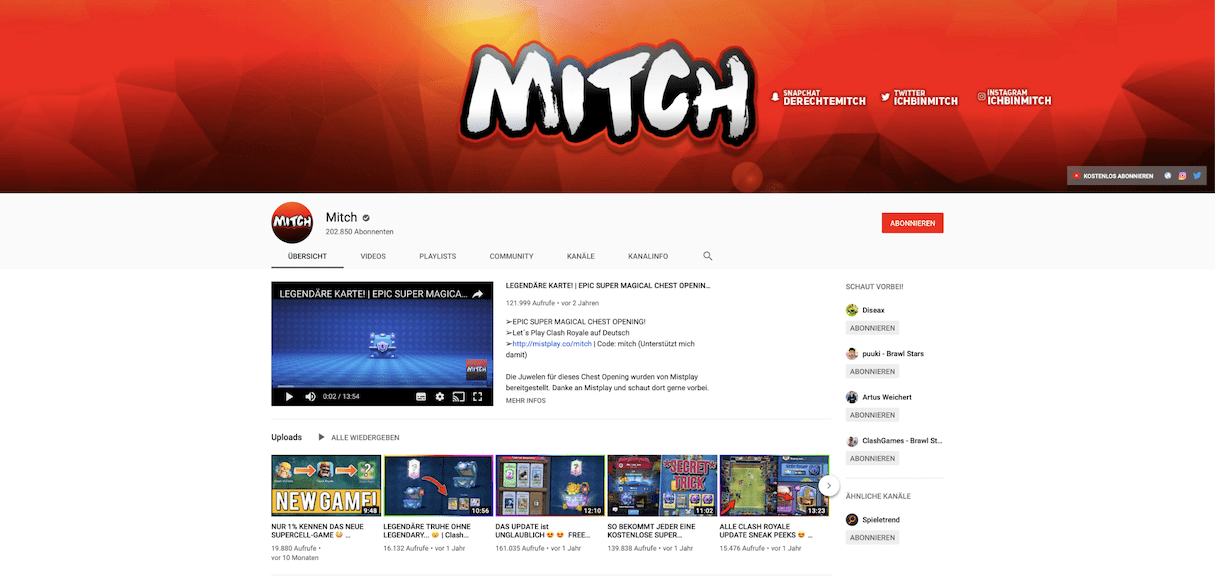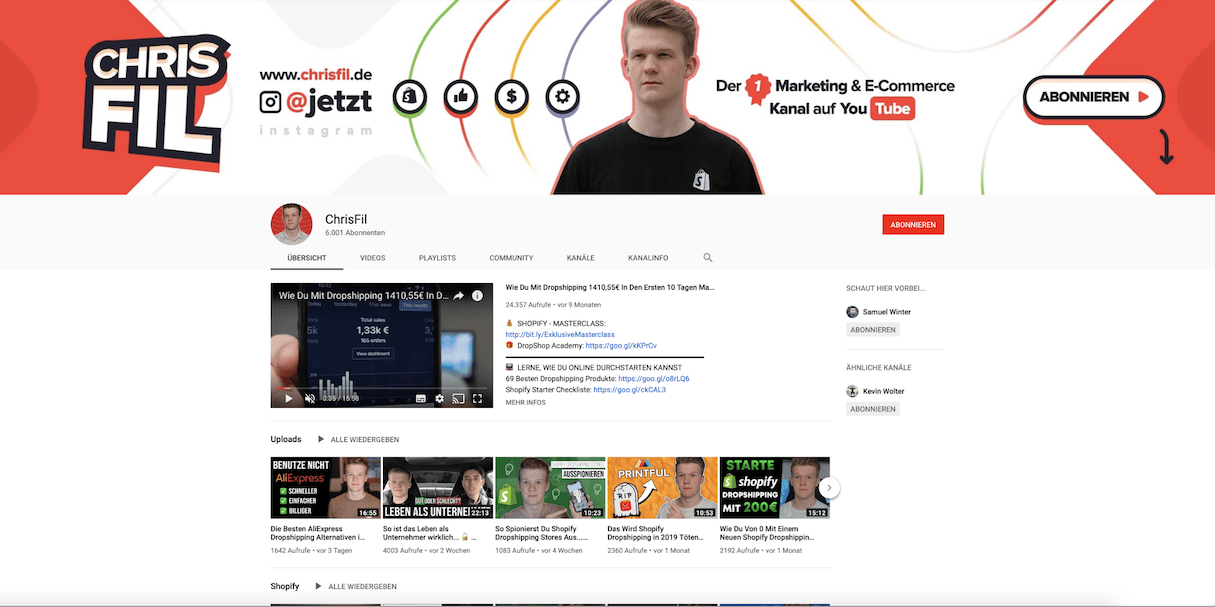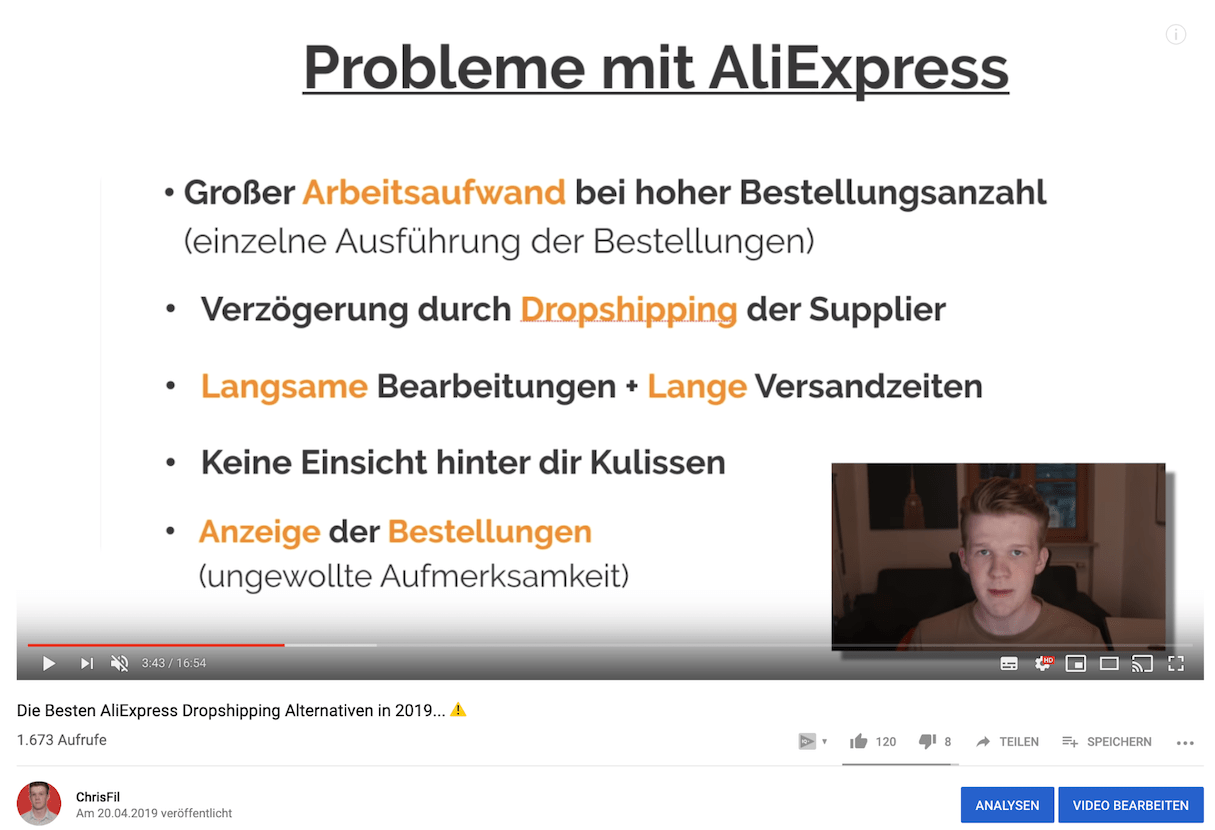Growing up in Munich, a city tucked in the base of the German Alps, the young Christoph Filgertshofer would eagerly wait for his father to come back from work and regale Christoph with stories from his exciting day as an entrepreneur. As an independent financial management consultant, Christoph’s father would share stories of starting his own practice and recruiting clients with his young son.
“It was always something different everyday. I loved the diversity,” Christoph explains, admitting that being exposed to his father’s multifaceted career at an early age planted the seed of entrepreneurship. And that seed quickly grew—at 18 years old, Christoph is now a successful digital marketer, instructor, and store owner.
We sat down with Christoph to hear about how he found his first success in ecommerce, why he started educating others about entrepreneurship through the Shopify Affiliate program, and his tips for building a successful ecommerce business in the German market.
Entrepreneurship at a young age
Even at the young age of 14, Christoph didn’t like to depend on his parents to buy fun items like iPods.
“I always hated to ask my parents for money. It was against my belief system. I saw all the other kids asking for iPods from their parents. I was tired of it.”
Instead, Christoph created small businesses at school, such as buying and selling collectible Pokemon cards. He even started a small newspaper business in his neighborhood, where he would employ neighborhood kids to distribute the newspapers he bought.
“I always had the entrepreneurial spirit. From my first few jobs, I had enough money to buy myself an iPod!”
But Christoph wasn’t ready to stop at Pokemon cards and newspapers. He played computer games like Clash of Clans with his friends everyday. When one of his friends recorded their gaming session, put it on YouTube, and racked up 5,000 subscribers, Christoph was intrigued. His friend explained that not only would other gamers watch him play, but brands would pay for advertising space on his videos.
“It was mind blowing to me that real people wanted to watch you play games,” Christoph says. “I thought, I’m a better player than my friend, so I just started doing the same. I thought it would be very easy to get subscribers.”

However, the gaming channel was harder to monetize than Christoph anticipated—it took him months to gain his first subscriber, and brands weren’t flocking to him. But Christoph was determined. Everyday, he uploaded a new video, even if no one was watching. The more videos he uploaded, the more viewers he amassed. The gruelling schedule paid off: eventually, Christoph’s YouTube channel garnered 230,000 subscribers and started generating a steady income of €10,000 a month.

His gaming channel had taught him how to build an audience and sparked a passion for digital marketing. But once again, Christoph wasn’t satisfied. He knew there were greater opportunities out there and he was determined to find them.
You might also like: What is Affiliate Marketing? The Myth vs. Reality.
From gaming online to selling online
Seeing how his channel was helping brands sell their own products, Christoph saw a new opportunity—instead of promoting other people’s products, he realized he could sell his own.
Christoph knew that pivoting to selling his own products online was going to be a big venture. So he assembled a team of his friends to embark on the learning experience together. They started studying digital marketing, learning the ins and outs of self-promotion. They decided to start out with a dropshipping store selling random, inexpensive accessories.
“We tried Shopify first and loved it,” Christoph says. “It was so easy, even for us beginners. We built a store and got it running in one or two days. We never thought we could do that. It was just awesome.”
While setting up the store was seamless, being successful was a different story.
“Our first store was a failure. We did not know how to set up a shop properly. We had no clue what we were doing. No clue at all. We knew how to market, but we only had two sales.”
The team decided to try again. This time, they sought out help to get a better idea of how to start and manage their online business correctly. They read countless how-to guides and articles, watched hours of video tutorials, and took many online courses all created by successful Shopify merchants and current Shopify Affiliates.
“We grinded,” Christoph says. “We watched dozens of videos. We invested our time in coaching programs. We looked for people who had done it before and tried to learn from them.”
We looked for people who had done it before and tried to learn from them.
The team’s second foray into ecommerce focused on women’s jewelry. In only a few months, they started to see success. With the knowledge they’d gained from their hours of studying Shopify educators, their store continued to grow.
After hearing about Christoph’s successful new store, friends of the teen started to reach out for advice on growing their own online stores. Once again, Christoph saw an opportunity.
You might also like: Always Listen to Mo: How Mohamed Ali Aguel Became an Ecommerce Education Superstar.
Becoming a Shopify Affiliate
With a successful YouTube channel and ecommerce store, Christoph started helping his friends start on their own path to success. As he continued to teach, his network of interested students continued to grow. Christoph began to realize that the struggles he faced early in his ecommerce career could help others have an easier time.
“I not only wanted to help the people who knew me,” Christoph explains. “I wanted to help all the people that I could.”

To share his ecommerce knowledge with a larger audience, Christoph decided to create a YouTube channel and join the Shopify Affiliate program.
From the beginning, Christoph centered his channel around authenticity, making it a point to only create videos about products that he was passionate about. He also strove to share every part of his entrepreneurial journey, even the failures.
“I am open about my failures and successes, so people trust the things I say. I tell them if I failed before, and I only promote what I have worked with and have had success with. People really like that.”
I am open about my failures and successes, so people trust the things I say.
Finding his niche in Germany
When Christoph was starting out on his own ecommerce journey, the majority of the affiliates he learned from were not based in Germany. This complicated things—there are different rules and standards in every country, so the information shared by an American affiliate, for example, wasn’t always relevant to Christoph’s case. Now that he himself was an affiliate, Christoph saw a chance to fill a need in the German market. He focused his education on German merchants, teaching them to sell on Shopify successfully.
Below, Christoph shares three tactics Shopify Affiliates can use to teach their audiences about how to take advantage of the growing opportunity in Germany. And while his advice may appear to be specific to Germany, it’s an approach that can be applied in any market around the world.

1. Teach your audience to mimic marketing tactics through real-life examples
Christoph encourages affiliates targeting German merchants to teach effective marketing tactics from other markets, like North America. Many of the tactics used in other markets can be successful in German markets, too.
One example is influencer marketing: partnering with influencers to promote your own product or service.
To teach his audience about influencer marketing, Christoph uses a real-life example. When he was selling women’s jewellery, he would search for the hashtag “necklace” on social media sites, to find influencers passionate about women’s jewellery in Germany. He would then direct message the influencers to tell them more about his women’s jewellery store, and how they can collaborate with him.
Because there aren’t many influencers in Germany, merchants should take advantage of an untapped market, Christoph says.
2. Educate your audience to adapt to local payment and shipping methods
Christoph learned that German customers did not feel safe paying for products or services using credit cards. He recommends that affiliates creating content for German merchants should understand the different payment methods available on Shopify, and educate their audience on how they can recommend payment methods like PayPal, debit cards, or invoices when building their businesses online.

Different shipping methods are important, too. Specifically, Christoph shares that the majority of dropshipping and online store tutorials recommend Ali Baba and shipping apps based in China. This is not ideal for merchants based in Germany, because they lead to weeks and months of wait times.
Instead, Christoph recommends that Shopify Affiliates targeting a German audience should create content around how to use Oberlo to optimize shipping dates, which better serves a German market.
You might also like: How to Grow Your Affiliate Marketing Efforts: Choosing the Right Affiliate Offers.
Tapping into the German education landscape
Because of his entrepreneurial father, Christoph grew up wanting to become an entrepreneur himself. From early school days selling Pokemon cards, to monetizing his video gaming content, to selling women’s accessories on Shopify, Christoph built up his entrepreneurial expertise.
His focus now is on educating German partners and their audiences on how to successfully sell in their own market. Every market is different, and by understanding the nuances of each, affiliates can find their niche and help Shopify merchants around the world find success.









